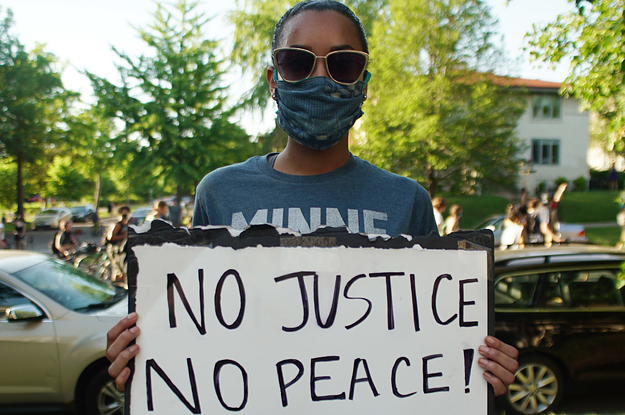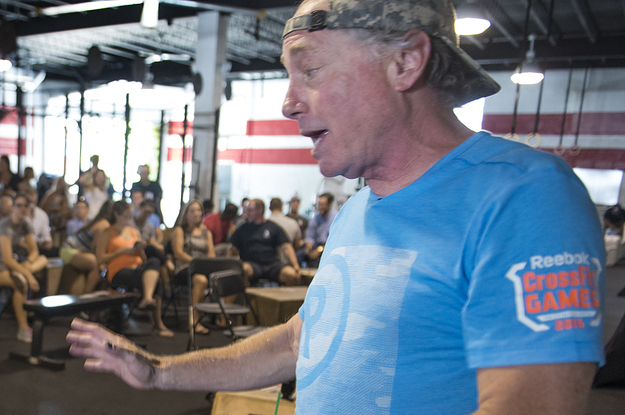Category: Worldwide
Category Added in a WPeMatico Campaign
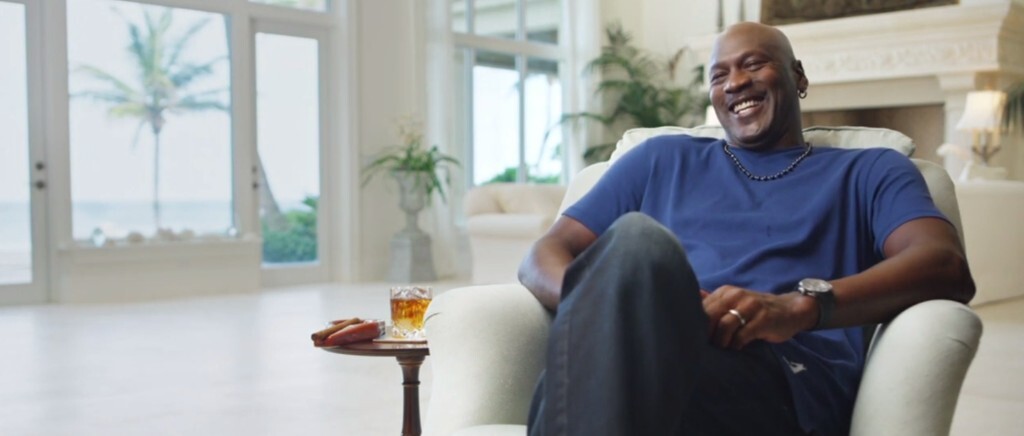
Did you know that Michael Jordan really, really likes competing in stuff? It doesn’t really matter what, he just can’t get enough of having the chance to win something, so this week he took his fishing yacht, Catch 23, to North Carolina for the Big Rock Blue Marlin Fishing Tournament for some competition on the open water.
Tuesday was Day 2 of the competition and Jordan and his crew managed to land quite the fish as they hauled in and boated a 442 pound marlin to the delight of the assembled masses and Jordan himself, who posed next to the massive catch with the rest of his boatmates.
VIDEO: Michael Jordan and Catch 23 at Big Rock Landing Tuesday afternoon. The crew boated a blue marlin weighing 442.3 pounds. pic.twitter.com/f0b4f2J1EC
— Ken Watling (@KWOnAir) June 9, 2020
Jordan looks at least as pleased with this catch as he did for a couple of his championships with the Bulls, and any activity that allows you to smoke cigars while competing is something MJ is always going to be down for. The catch puts Jordan’s boat in sixth position on the leaderboard for largest catch, as the leading boat has a 494.2 pound monster. The Catch 23 boat will have through the 13th to try and top it.
Jordan’s fishing excursion comes a week after he pledged $100 million over the next decade to fight racial injustice, with a heavy emphasis on funding educational programs and scholarship opportunities for the Black community.

Indie music has grown to include so much. It’s not just music that is released on independent labels, but speaks to an aesthetic that deviates from the norm and follows its own weirdo heart. It can come in the form of rock music, pop, or folk. In a sense, it says as much about the people that are drawn to it as it does about the people that make it.
Every week, Uproxx is rounding up the best new indie music from the past seven days. This week we got a collection of raw demos from Phoebe Bridgers, a new ambient project from Strand Of Oaks, and another stunning single from Gordi.
Phoebe Bridgers — Inner Demos EP
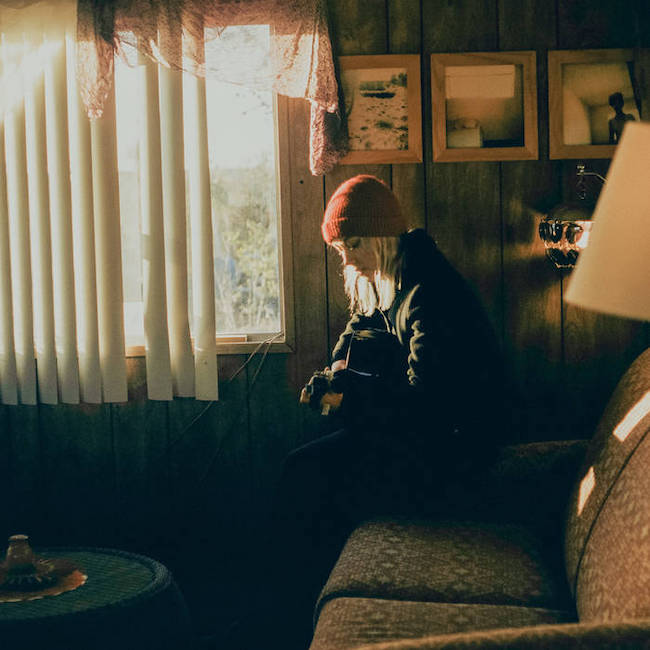
On the first Friday of every month since the onset of the COVID-19 pandemic, Bandcamp has been waiving its fee for purchases through their platform. Last week, Phoebe Bridgers took advantage of the day’s added earnings by releasing an EP of demos for one day only and donating all of the proceeds to bail funds across the country. While the three-track Inner Demos collection is no longer available to stream or purchase, according to Carolyn Droke for Uproxx, the EP featured “‘voice memo’ versions of ‘Garden Song’ and ‘Kyoto,’ and a ‘spire demo’ of ‘I See You.’”
Rolling Blackouts Coastal Fever — Sideways To A New Italy
With their new album, this Australian quintet hope to inspire hope. Their rollicking new alt rock album Sideways To A New Italy was written to be “some sort of bedrock of hopefulness to stand on, something to be proud of,” vocalist Fran Keaney said in a statement. “A lot of the songs on the new record are reaching forward and trying to imagine an idyll of home and love.”
Strand Of Oaks — Ambient For Change
Another Bandcamp fundraising effort this week comes from Strand Of Oaks, whose Ambient For Change project was released on Friday to benefit the NAACP Legal Defense Fund. Along with his first ambient release, Timothy Showalter shared a statement, saying that the songs were written in the wake of the tragic violence across the country. “The one outlet that I have is music and the ability to create with the intention of helping,” he wrote. “I improvised these songs to try and give language to the overwhelming emotion I was feeling and to try in a small way to lend my voice of support.”
Westerman — Your Hero Is Not Dead
After rolling out a series of singles over the last few years, Will Westerman has unleashed his debut full-length album, an atmospheric and almost hallucinogenic collection of tracks that strikes a balance of optimism and existentialism. The album’s twelve tracks show Westerman’s mastery of soudscapes and synth melodies, making for a striking entry into the scene.
Covet — Technicolor
Sometimes, sounds can evoke colors. Fittingly, Covet’s sophomore full-length album is titled Technicolor, perfectly describing what the music makes you see when you close your eyes. With guitar pedal wizardry and emo-tinged instrumental trappings, this San Francisco, CA trio evokes visuals to create and invite you to join them in a new world.
Hinds — The Prettiest Curse
Hinds present a more polished version of themselves on their third LP. After spending two albums trying to defy pop music tropes and stick firmly in the world of garage rock and mind-boggling harmonies, The Prettiest Curse finds the Spanish band showing off their knack for hooks and pop melodies. It employs more “experimental” instrumentation than we’re used to hearing from the band, opening up a door to a world of possibilities for the quartet.
Gordi — “Unready”
With her sophomore album Our Two Skins just around the corner, Australian singer-songwriter Gordi has been delivering the goods with excellent singles to preview the forthcoming effort. “Unready” is a departure from the introspection and longing that makes up most of Our Two Skins, and instead “sheds light on the upcoming album’s more lively side” with a vocal track anchored by a modulated vocal, according to Carolyn Droke for Uproxx.
Amnesiac Scanner — “AS Flat (feat. Code Orange)”

Talk about a match made in heaven: glitchy German-based Finnish electronic producers Amnesiac Scanner have teamed up with Pittsburgh heavy metal outfit Code Orange to deliver “AS Flat,” a track that is equal parts intoxicating and horrifying. Glitchy and intense, “AS Flat” is the latest taste of Amnesiac Scanner’s forthcoming effort Tearless.
Some artists covered here are Warner Music artists. Uproxx is an independent subsidiary of Warner Music Group.
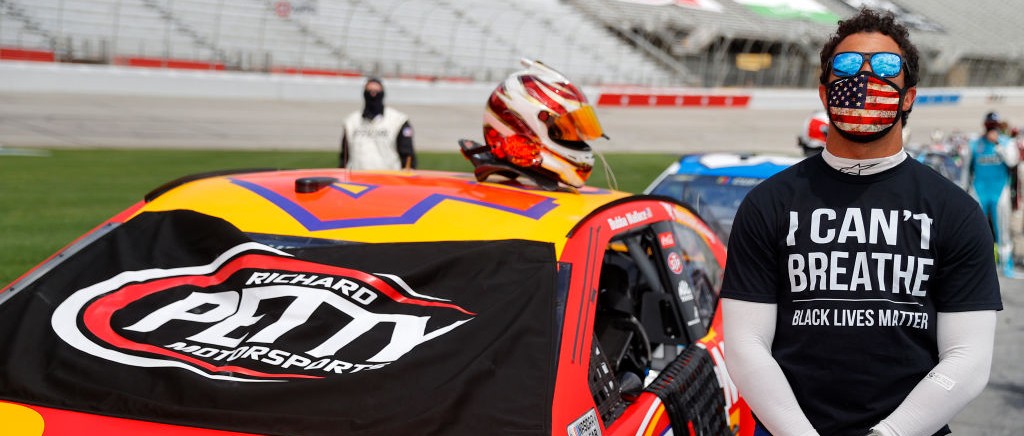
NASCAR’s season will roll along to Martinsville this weekend, but the talk around the sport is not whether Kevin Harvick can figure out a way to win back-to-back races this week, but instead on NASCAR’s rare step forward in the world of social issues. Prior to Sunday’s race in Atlanta, NASCAR aired a message from many of its top drives on how it’s time for them to listen and learn when it comes to systemic racism and NASCAR’s president gave an address prior to the race that the sport and the world have work to do when it comes to race and diversity.
Bubba Wallace, driver of the iconic Petty Motorsports No. 43 Chevrolet, is the Cup Series’ lone Black driver and has been using his platform to advocate for change within the sport and beyond. Wallace has said he’s been pleased with NASCAR’s response thus far to the protests of police brutality after the killings of George Floyd and Breonna Taylor by police in Minneapolis and Louisville, but notes there’s work to do. He’s called for NASCAR to take the step of banning confederate flags from being displayed by fans at races, and hopes to work with NASCAR to make the sport more inclusive.
On Sunday, Wallace wore an “I Can’t Breathe” t-shirt that also said Black Lives Matter prior to the race as he stood beside his car for the national anthem, and this Wednesday his car will not feature the traditional Petty blue paint scheme, but will be a black design that features #BlackLivesMatter on the back and “Compassion, Love, Understanding” on the hood and bumper.
Here is the car that @BubbaWallace will race at @MartinsvilleSwy pic.twitter.com/8ujMDthHc9
— Alan Cavanna (@AlanCavanna) June 9, 2020
It is a strong statement and one that most folks wouldn’t expect to see happen in NASCAR, but it shows just how widespread the movement is right now and kudos to Petty Motorsports for supporting Wallace in this way in helping him spread the Black Lives Matter message.

Whether you’ve been in the streets protesting police violence or merely looked at Twitter, like, once this past week, you’ve likely had the words “Defund the Police” enter your orbit. If your knowledge of the term begins and ends at seeing it on protest sign or as a trending hashtag, it may sound like a radical idea; more of a pipe dream than a potential policy. But while it’s doubtful that you’ll see defunding the police on the national ballot this November — President Trump is campaigning on a platform of “Law & Order” and the presumptive Democratic nominee, Joe Biden, has already signaled that he’s not for defunding the police — the idea seems to be gaining support in a hurry. As more and more people look into how much of a city’s budget is actually spent on policing, how small of an effect that has on driving down crime rates, and the tremendous number of tasks we rely on police officers for, we’re witnessing a paradigm shift in real-time.
This past Sunday, June 7th, the Minneapolis City Council voted to dismantle the city’s police department following George Floyd’s murder at the hands of officer Derek Chauvin with nine votes in favor, giving the city council a veto-proof supermajority. Speaking to CNN, Minneapolis Council President Lisa Bender said:
“We committed to dismantling policing as we know it in the city of Minneapolis and to rebuild with our community a new model of public safety that actually keeps our community safe. [We need] to listen, especially to our black leaders, to our communities of color, for whom policing is not working and to really let the solutions lie in our community.”
Though exactly what the replacement of the police force will look like in Minneapolis isn’t clear, the action wasn’t taken on a whim. The approach was looked at from both budgetary and community-based perspectives and the council clearly decided that they could create a better standard of living without traditional policing. It’s a massive moment in the history of the nation and, with NYC promising to cut the city’s police budget too, it very well may become a trend.
We are going to dismantle the Minneapolis Police Department.
And when we’re done, we’re not simply gonna glue it back together.
We are going to dramatically rethink how we approach public safety and emergency response.
It’s really past due. https://t.co/7WIxUL6W79
— Jeremiah Ellison (@jeremiah4north) June 4, 2020
What does defunding the police mean, specifically?
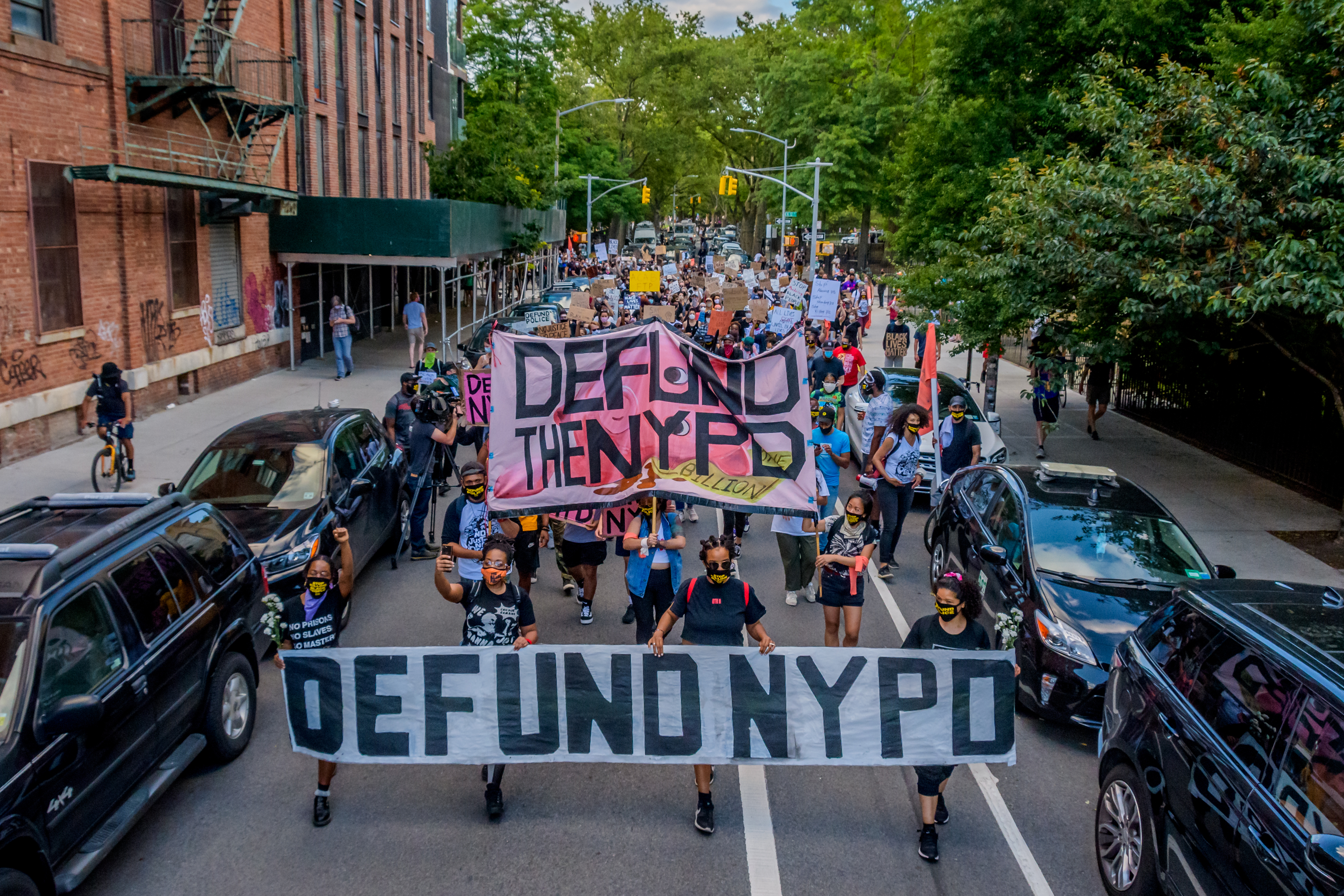
In a very basic sense, when people call for the defunding of the police, what they’re asking for is “shrinking the scope of police responsibilities and shifting most of what government does to keep us safe to entities that are better equipped to see that need,” says Georgetown Law School professor Christy E. Lopez, in an article published in the Washington Post. “It means investing more in mental health care and housing and expanding the use of community mediation and violence interruption programs.”
According to Forbes, despite the fact that the level of crime has dropped substantially over the last 30 years, cities throughout the country allocate larger and larger shares of their budgets to law enforcement every year, and today collectively spend $100 billion a year on policing nationwide and $80 billion a year on incarceration. Part of the reason for these ballooning budgets is because of how heavily we rely on them as a society for handling issues that police aren’t trained or equipped to deal with.
Samuel Sinyangwe, the co-founder of Campaign Zero, a data-driven platform that seeks out comprehensive solutions to ending police violence, says we’re simply asking too much of them. “For too long, police have been used and invested in as a catch-all for a range of issues — from substance abuse to homelessness to even school discipline. That is way beyond what the role of the police should be.” Sinyangwe told The Philadelphia Inquirer, “Instead of police, we should be investing in alternatives. In response to public health issues like substance abuse, we should be having mental-health providers responding to calls involving people who are having mental-health crises rather than police.”
According to CNN, when the Minneapolis city council analyzed the 911 calls placed by their constituents, they found that most were for mental health services, health, and EMT and fire services, and not violent crimes. Part of the reason the police are called so often regarding matters of mental health is that programs that traditionally addressed those issues were cut in favor of increasing law enforcement budgets. “By dismantling the mental illness treatment system, we have turned mental health crisis from a medical issue into a police matter,” says John Snook, the executive director and co-author of a study by the Treatment Advocacy Center that found that people with untreated mental illnesses were 16 times more likely to be killed during a police encounter than other civilians approached or stopped by law enforcement.
A study by the Federal Reserve and cited by The Washington Post also found no correlation nationally between spending and crime rates. Over the last 60 years, the crime rate has risen and fallen as spending has spiked from a law enforcement budget of $2 billion in 1960 to $137 billion by 2018.
In Los Angeles, Mayor Eric Garcetti is currently facing increased scrutiny from his constituents after the LA chapter of Black Lives Matter called to attention his proposed city budget that would allocate 54% of funds to the LAPD, something that the people of Los Angeles don’t want to begin with, according to BLM-LA Co-founder Melina Abdullah.
“When we engaged in a participatory budgeting session with Angelenos, they wanted to spend 5.7 percent of the city budget on traditional approaches to law enforcement. That includes LAPD, traffic enforcement, and the city attorney’s office — which is the prosecutor of the city.” Abdullah says. “People don’t want to spend this kind of money on police. When we look at those survey results, people saw this kind of approach to law enforcement as the least important of their spending priorities. Saying defunding the police moves us toward what most people say they want anyway.”
If we don’t have police, who will keep us safe?
This is an interesting question you’ll often see posed by those who are critical of the call to defund the police. It’s fair to wonder this, but it would also be wise to take into account the fact that as black and brown people in America we often don’t feel safe to begin with. Meanwhile, as more Americans take to the streets to protest unchecked police violence, it’s become clear that the “serve and protect” mandate has been interpreted by officers as running people over, beating them with batons, pepper-spraying them, and killing them.
If you’ve never had to deal with police violence or feared for your life during a routine traffic stop, then the idea of defunding or even abolishing the police may seem scary, but what defunding allows us to do is rethink how we keep communities safe. In a recent episode of Last Week Tonight, John Oliver broke it down simply, “Defunding the police absolutely does not mean that we eliminate all cops and just succumb to the purge. Instead, it’s about moving away from a narrow conception of public safety that relies on policing and punishment, and investing in a community’s actual safety net, things like stable housing, mental health services, and community organizations.”
Why do people think defunding the police is a better solution than reforming the system?
In truth, we can/should be working to reform the system even if we’re also taking action to defund the police. Community driven calls to action like Campaign Zero’s #8Can’tWait campaign, which seeks to urge law enforcement agencies to adopt eight use of force reforms that can immediately reduce killings, are great solutions that your local law enforcement agencies can implement immediately. No elections needed.
We just launched #8cantwait, a campaign to get Mayors across the country to immediately adopt these 8 use of force policy restrictions that can reduce police violence by to 72%. Check it out at https://t.co/myfBGwQRhT. Let’s talk about why this matters. (1/x) pic.twitter.com/EMAUCbPQHY
— Samuel Sinyangwe (@samswey) June 3, 2020
Campaign Zero has found that the police departments that have adopted their “use of force” policies kill significantly fewer people, and the departments that regularly exhaust all eight of their solutions before shooting see a reduction of 25% fewer killings by police. This is huge, but also begs the question: Is that the best we can do?
Speaking to WBUR, Black Lives Matter co-founder Patrisse Cullors says that only radical shifts can stop law enforcement violence. “It’s not possible for the entity of law enforcement to be a compassionate, caring governmental agency in black communities. That’s not the training, that’s not the institution. We have spent the last seven years asking for training, asking for body cameras. The body cameras have done nothing more than show us what’s happened over and over again. The training has done nothing but show us that law enforcement and the culture of law enforcement is incapable of changing.”
How can I find out more about this topic?
As you might have gathered by now, the subject of defunding the police is massive. You could write a whole book about it — in fact, someone has and you can download a PDF version for free right now. The End of Policing, by Professor of Sociology and Coordinator of the Policing and Social Justice Project at Brooklyn College, Alex S. Vitale, uses academic research to show the tainted origins of modern policing, and how the expansion of police authority is inconsistent with community empowerment, social justice, and public safety. You can also learn by following leaders who advocate for defunding the police like Melina Abdullah or Alicia Garza, as well as organizations like the ACLU, and Black Lives Matter.
Are we going to keep tinkering with the same old same old — or will we find the courage to transform? Imagine if WE believed we were worth more than short-term solutions. In 2014 we got body cameras. In 2020, we can have mental health serives, support for survivors…
— Alicia Garza (@aliciagarza) June 4, 2020
Money for schools, jobs that employ our people in addressing the problems in our communities. Treatment services. Move the money. Move the money. Move the money. Invest in community security. Community resources. Community power. #AAPF #UnderTheBlacklight
— Alicia Garza (@aliciagarza) June 4, 2020
While the issue is certainly new to many people, it’s not nearly as radical as it seems. It’s backed by data and sure to be a continual lightning rod in conversations about race and law enforcement in this country evolve.
“Defund” means that Black & Brown communities are asking for the same budget priorities that White communities have already created for themselves: schooling > police,etc.
People asked in other ways, but were always told “No, how do you pay for it?”
So they found the line item.
— Alexandria Ocasio-Cortez (@AOC) June 9, 2020

For two straight weeks, protesters across the country have taken to the streets to demand justice and equality after George Floyd, an unarmed Black man, was killed by police in Minneapolis. People of color in America have called upon the rest of us to broaden our understanding of what it means to be treated differently in this country and how the major social, cultural, and economic institutions perpetuate inequality via insidious and long-standing policies and practices that stack the deck.
Social media has been flooded with pieces that help explain what privilege really means and how it is ingrained in our culture, and numerous pro athletes have used their clout and their influence to bring greater awareness to a problem that still persists despite incremental progress.
Lakers star Kyle Kuzma added his voice to the mix via The Players’ Tribune on Tuesday, offering his own analogy of what white privilege means to him.
That’s why white people have to realize, it’s not just about your “heart” or your individual mindset. Like how some people say, “I don’t have a racist bone in my body.”
Well, the system does, and you can’t see it because it benefits you.
The best analogy I’ve heard that explains white privilege is that it’s like an invisible backpack that every white person wears. If you’re white and you’re ever in a situation where you might need help, you can take that backpack off, open it up, and pull out all sorts of sh*t.
Kuzma, who is biracial, also talked about what it was like growing up in an environment where he was caught between two worlds. Other athletes throughout the country have joined rallies and/or spoken out via social media and will continue to do as the protests now enter their third week.

As the U.S. enters its third week of protests over racial injustice and police brutality, some Americans still don’t fully understand the “why” behind them. Some are still under the impression that the protests are about justice for George Floyd, but that’s only part of it. Some think they’re about police brutality, but that’s just part of it too.
The fact that so many Americans don’t understand the scope of the problem at the heart of these protests, or why they are playing out the way they are, is a symptom of the problem itself.
With a quick history lesson and Monopoly metaphor, Kimberly Latrice Jones powerfully explained a crucial element of what we’re seeing in a video that has gone viral on social media—the economic element that is often overlooked or not well understood by those outside of the group impacted by our nation’s economic history. This element gives important context to some of what we’re seeing, in addition to painting the bigger picture within which these protests are happening.
Watch:
If you’re unfamiliar with Jones’ reference to Tulsa and Rosewood, here’s some additional education.
Tulsa’s Black Wall Street massacre of 1921:
Tulsa’s Black Wall Street massacre
www.youtube.com
And a brief overview of the Rosewood massacre:
Jan. 5, 1923 – Rosewood, Fla., Destroyed by White Mob
www.youtube.com
The horrible truth is that most Americans don’t know our own history, especially when it comes to race. So much of what we learn about racism in our history is couched in problematic language that favors white sensibilities or is completely omitted. How many of us learned that the Confederate states didn’t just want to keep slavery for economic reasons, but because they believed that God intended for Black people to be subservient to the white race and that it was wrong to believe otherwise? How many of us learned about Black Wall Street in school, much less voter suppression, redlining and other ways Black Americans have been systematically oppressed in modern history beyond Jim Crow?
How many of us have truly internalized the fact that the massive exploitation of Black bodies over hundreds of years required massive violence to carry out, and that the only way for that exploitation and violence to continue was to legitimize it by creating a massive, dehumanizing justification for it—thus the enduring legacy of anti-blackness that permeates not only our history but so much of our current society?
Yes, some progress has been made. But every step forward has been fought for tooth and nail, and every advancement has been met with resistance and resentment by far too many fellow Americans. Until we get that, until our nation truly comes to terms with the depth and breadth of the injustices being called out and decides to take real, concrete steps toward restoration, reconciliation and reparation, we’re going to keep finding ourselves at this same crossroads.
Of all of the powerful points Jones made in that video, perhaps one should give us the most pause: America is lucky that black people are just looking for equality and not revenge. She is right, because the scope of that payback would be mighty indeed.
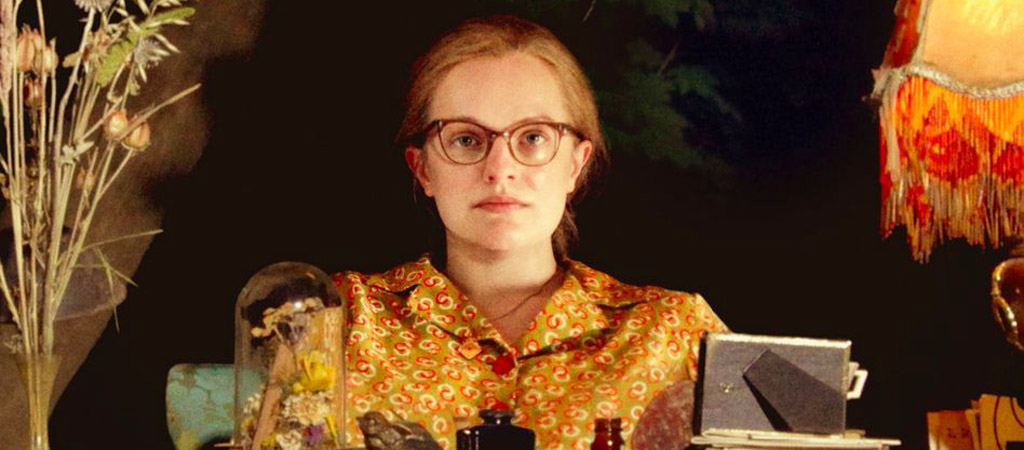
If nothing below suits your sensibilities, check out our guide to What You Should Watch On Streaming Right Now.
Shirley (Hulu movie) — Following the VOD success of Invisible Man, Elisabeth Moss is back in the horror game, this time as renowned author Shirley Jackson. She’s struggling in her marriage, and while living in close proximity to some newlyweds, this leads to a cycle of twisted games. Moss has been singled out for another masterful performance in an increasingly decorated career following her Mad Men and The Handmaid’s Tale turns.
The Last Days of American Crime (Netflix film): Based upon the graphic novel from Rick Remender and Greg Tocchini, this futuristic movie stars Edgar Ramirez and Michael Pitt. The pair hope to pull off a great American heist before an interfering government signal is due to halt all crimes from being committed. This sounds like a hit for the Extraction crowd that’s looking for a new action fix.
The Vast Of Night (Amazon Prime movie) — Our own Josh Kurp called this movie a “fun, genre-heavy, impressively acted, darkly-but-beautifully lit throwback that starts slow, but once you realize what going on, things begins to click like an old-fashioned remote control.” The story takes place in 1950s New Mexico as a mysterious frequency descends upon a small community. It’s a tense and entirely watchable movie.
The Lovebirds (Netflix movie) — Kumail Nanjiani might have a lot to say about The Beastmaster and Krull, but his movie with Issa Rae is also sliding onto Netflix. They portray a couple who get sucked into a murder mystery, and god only knows if they and their relationship will make it though this (hilarious) ordeal.
A few theatrical releases are worth revisiting as well:
Uncut Gems (Netflix, Monday) — Now, home audiences can absorb the full gravitational effect of Adam Sandler in the most intense performance of his career. The Sandman arguably got robbed of an Oscar nod for his turn in Josh and Benny Safdie’s electrifying crime thriller that accelerates tension to a fever pitch. He’s superb as a charismatic New York City jeweler who grows increasingly desperate while walking a tight-wire amid relentlessly threatening adversaries, and keep your eyes open for a supporting turn from the always great LaKeith Stanfield.
Rocketman (Hulu, Friday) — Taron Egerton’s fantastic turn as Elton John is finally home on a streaming service. Enjoy the spectacle and emotion of Bernie Taupin’s rise to iconic status, including his 1970s breakthrough and the subsequent fantastical transformation.
And here are a few of tonight’s TV highlights:
Dirty John (USA 10:00 p.m.) — The Betty Broderick Story kicks into a more desperate gear as the irresistibly trashy series continues. Betty’s working hard to stay afloat, and this latest chapter is even dirtier than last year’s podcast-based entry.
Stargirl (CW, 8:00 p.m.) — Courtney’s making new recruits for the Justice Society of America while one of the town’s residents is freaking Pat out following a bizarre conversation.
The Last O.G. (TBS, 10:30 p.m.) — Tray’s dealing with bully maneuvers from his girlfriend’s ex husband, who happens to be a cop, and Cousin Bobby’s prison release is spawning unexpected problems.
The Late Show With Stephen Colbert — Chris Wallace
The Tonight Show With Jimmy Fallon — Christian Slater, Sia
Jimmy Kimmel Live — Josh Gad
The Late Late Show With James Corden — Josh Groban
Late Night With Seth Meyers — Brad Paisley

